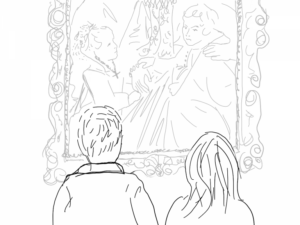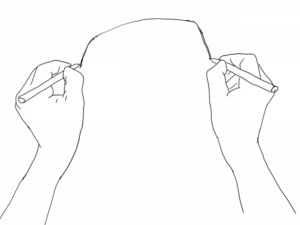
Devised by Nadine Mahoney
Download the PDF: Light Touch, Hands and Experimental Drawing
Introduction
When we look at a painting in an art gallery we do not touch it, as even clean fingers will leave marks that might be invisible to the eye but will cause damage to the surface of the painting over time. Sometimes, however, the surface of a painting and the imagery within it can evoke the sensation of touch. This resource invites you to think about touch and to experience it as part of a creative process. There are a number of activities, take your time, you don’t have to do them all in one go.
In his painting The Family of Jan Brueghel the Elder (1613 – 1615) the artist Peter Paul Rubens (1577 – 1640) has painted a family he knew well. Jan Brueghel (1568 – 1625) was also an artist and together they painted many artworks with Brueghel painting the animals and Rubens painting the people. Here, in a portrait of his close friend’s family, Rubens has created a remarkable sense of touch and family connection, positioning and painting all the visible hands to be gently holding or touching lightly. When you look closely at the details you can see how the boy is touching his mother’s bracelet, drawing our attention to his fingertips, one of most sensitive parts of our body. Rubens’ composition of the mother and her children’s hands in the middle of the canvas creates a strong sense of connection making the painting feel timeless. Family and caregivers come in all formats, but this sense of touch and being connected to loved ones is universal.
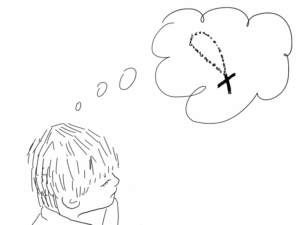
Activity 1:
In pairs:
- Spend two minutes looking at the painting together in silence.
- Choose a detail in the painting but do not tell the other person what it is.
- One partner shuts their eyes – this will help concentrate on the sense of touch.
- Using a finger or thumb the person who can see draws their chosen detail on the back of the other’s hand.
- Can they tell what it is without looking back at the painting? If they can’t they can look. Draw it again whilst looking at the painting. Does it feel different when you are looking?
- Swap and repeat so you have both had a turn.
(Detail suggestion: The ruff around the mother’s and father’s necks / the crucifix (cross), the necklace the girl is wearing / the father’s hat / mouth / eyes).
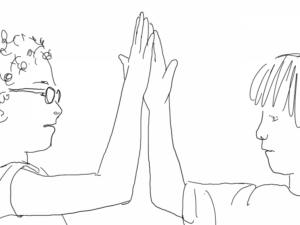
Activity 2:
In pairs. Read the instructions together before you do the activity.
- Together look closely at the little girl’s hand, her right hand is almost touching her mother’s.
- Open your hands and have them facing each other (as if you were giving a high five).
- Bring them as close as you can without them actually touching.
- Close your eyes, breathe in and out slowly and focus on that feeling.
Pause and Reflect
Did your hands end up touching? If they touched how did it make you feel? Did it surprise you, tickle, feel strange or comforting?
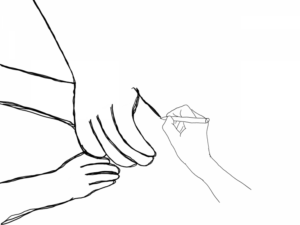
Activity 3:
Take a close look at the hands in the middle of the painting. Take minute to think about which parts of hands make contact, and how close they are to each other.
- Draw all five hands without lifting up your pencil.
- Try this a few times. You could set a timer and draw for one minute then try again for three minutes.
Extension: Another time, you could try drawing the whole painting without lifting your pencil. Look closely at all the ways the family are connected. Place your paper in portrait mode then begin by drawing the left side of the father and move around clockwise
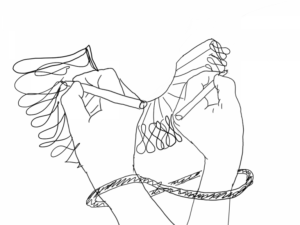
Activity 5:
In pairs, loosely tie your drawing hand to your partners using a strip of fabric or some tape. Repeat activity 4, but with your hands joined together. How does it feel, do you work well together or is it a struggle? Do you need to discuss what you’re doing? Try drawing without talking, just by sensing where the other person’s hand wants to move.
Extension activities:
- Look at the other paintings, make a list of all the different things the hands are touching or doing.
- The Courtauld Collection is archived on the Art & Architecture website (http://www.artandarchitecture.org.uk). Visit the site and type ‘hands’ into the search tab, and find your favourite image of hands. Discuss with a partner why that image interests you.






